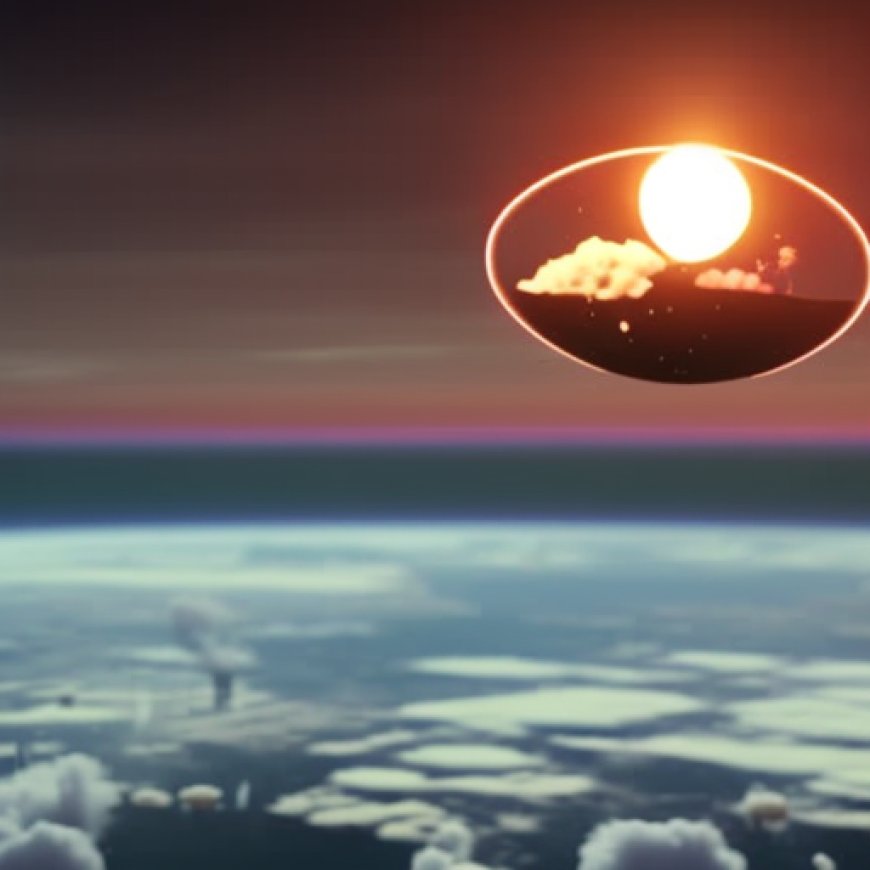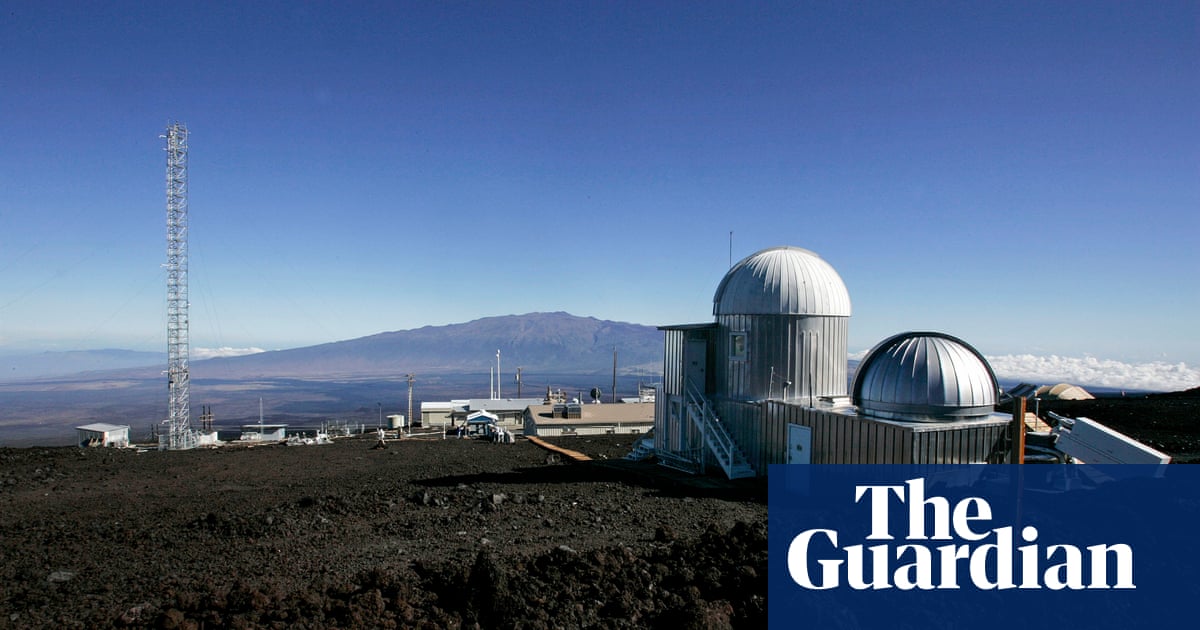Record-breaking increase in CO2 levels in world’s atmosphere
Record-breaking increase in CO2 levels in world’s atmosphere The Guardian


The Largest Ever Recorded Increase in Carbon Dioxide Levels

The largest ever recorded leap in the amount of carbon dioxide laden in the world’s atmosphere has just occurred, according to researchers who monitor the relentless accumulation of the primary gas that is heating the planet.
Record-Breaking Increase in CO2 Levels
The global average concentration of carbon dioxide in March this year was 4.7 parts per million (or ppm) higher than it was in March last year, which is a record-breaking increase in CO2 levels over a 12-month period.
Factors Contributing to the Increase
The increase has been spurred, scientists say, by the periodic El Niño climate event, which has now waned, as well as the ongoing and increasing amounts of greenhouse gases expelled into the atmosphere due to the burning of fossil fuels and deforestation.
“It’s really significant to see the pace of the increase over the first four months of this year, which is also a record,” said Ralph Keeling, director of the CO2 Program at UC San Diego’s Scripps Institution of Oceanography. “We aren’t just breaking records in CO2 concentrations, but also the record in how fast it is rising.”
Monitoring CO2 Levels
The global CO2 readings have been taken from a station perched upon the Mauna Loa volcano in Hawaii since the measurements began in 1958 under Keeling’s father, Charles. The concentrations of CO2 have increased each year since, as the heat-trapping gas continues to progressively accumulate due to rampant emissions from power plants, cars, trucks and other sources, with last year hitting a new global record in annual emissions.
Implications for Sustainable Development Goals
- The rapid rise in CO2 levels threatens the world with disastrous climate breakdown in the form of severe heatwaves, floods, droughts, and wildfires.
- Recent research has suggested that CO2 levels were last this high around 14 million years ago, causing a climate that would appear alien to people alive today.
- The previous record annual rise in CO2 took place in 2016, amid another El Niño event, which temporarily causes a spike in global temperatures.
- In order to stabilize the climate and achieve the Sustainable Development Goals (SDGs), it is crucial for CO2 levels to be falling. However, human activity has caused CO2 to continue rising.
Conclusion
The rate of rise in CO2 levels will almost certainly come down, but it is still increasing. To address the urgent climate crisis and work towards achieving the SDGs, it is essential to take immediate action to reduce greenhouse gas emissions and transition to sustainable energy sources. The current trend is a cause for concern and emphasizes the need for global cooperation and commitment to combat climate change.
SDGs, Targets, and Indicators
| SDGs | Targets | Indicators |
|---|---|---|
| SDG 13: Climate Action | Target 13.1: Strengthen resilience and adaptive capacity to climate-related hazards and natural disasters | Indicator not mentioned in the article |
| Target 13.2: Integrate climate change measures into national policies, strategies, and planning | Indicator not mentioned in the article | |
| Target 13.3: Improve education, awareness-raising, and human and institutional capacity on climate change mitigation, adaptation, impact reduction, and early warning | Indicator not mentioned in the article | |
| Target 13.a: Implement the commitment undertaken by developed-country parties to the United Nations Framework Convention on Climate Change to a goal of mobilizing jointly $100 billion annually by 2020 from all sources to address the needs of developing countries in the context of meaningful mitigation actions and transparency on implementation and fully operationalize the Green Climate Fund through its capitalization as soon as possible | Indicator not mentioned in the article | |
| Target 13.b: Promote mechanisms for raising capacity for effective climate change-related planning and management in least developed countries and small island developing States, including focusing on women, youth, and local and marginalized communities | Indicator not mentioned in the article | |
| SDG 15: Life on Land | Target 15.1: By 2020, ensure the conservation, restoration, and sustainable use of terrestrial and inland freshwater ecosystems and their services, in particular forests, wetlands, mountains, and drylands, in line with obligations under international agreements | Indicator not mentioned in the article |
| Target 15.2: By 2020, promote the implementation of sustainable management of all types of forests, halt deforestation, restore degraded forests, and substantially increase afforestation and reforestation globally | Indicator not mentioned in the article | |
| Target 15.5: Take urgent and significant action to reduce the degradation of natural habitats, halt the loss of biodiversity, and protect and prevent the extinction of threatened species | Indicator not mentioned in the article |
1. Which SDGs are addressed or connected to the issues highlighted in the article?
SDG 13: Climate Action
The article discusses the increase in carbon dioxide levels in the atmosphere, which is a key driver of climate change. SDG 13 specifically focuses on taking urgent action to combat climate change and its impacts.
SDG 15: Life on Land
The article mentions deforestation as one of the factors contributing to the increase in carbon dioxide levels. SDG 15 aims to protect, restore, and promote sustainable use of terrestrial ecosystems, including forests.
2. What specific targets under those SDGs can be identified based on the article’s content?
Target 13.1: Strengthen resilience and adaptive capacity to climate-related hazards and natural disasters
While not explicitly mentioned in the article, the increase in carbon dioxide levels contributes to climate change, which can lead to more frequent and severe climate-related hazards and natural disasters. Strengthening resilience and adaptive capacity is crucial to mitigate the impacts of these events.
Target 13.2: Integrate climate change measures into national policies, strategies, and planning
The article highlights the need to address the ongoing and increasing amounts of greenhouse gases expelled into the atmosphere due to the burning of fossil fuels and deforestation. Integrating climate change measures into national policies, strategies, and planning is essential to reduce these emissions.
Target 15.2: By 2020, promote the implementation of sustainable management of all types of forests, halt deforestation, restore degraded forests, and substantially increase afforestation and reforestation globally
The article mentions deforestation as a contributing factor to the increase in carbon dioxide levels. Target 15.2 specifically addresses the need to halt deforestation and restore degraded forests, which can help mitigate climate change by sequestering carbon dioxide.
3. Are there any indicators mentioned or implied in the article that can be used to measure progress towards the identified targets?
No specific indicators are mentioned or implied in the article that can be used to measure progress towards the identified targets.
SDGs, Targets, and Indicators
| SDGs | Targets | Indicators |
|---|---|---|
| SDG 13: Climate Action | Target 13.1: Strengthen resilience and adaptive capacity to climate-related hazards and natural disasters | Indicator not mentioned in the article |
| Target 13.2: Integrate climate change measures into national policies, strategies, and planning | Indicator not mentioned in the article | |
| SDG 15: Life on Land | Target 15.2: By 2020, promote the implementation of sustainable management of all types of forests, halt deforestation, restore degraded forests, and substantially increase afforestation and reforestation globally | Indicator not mentioned in the article |
Copyright: Dive into this article, curated with care by SDG Investors Inc. Our advanced AI technology searches through vast amounts of data to spotlight how we are all moving forward with the Sustainable Development Goals. While we own the rights to this content, we invite you to share it to help spread knowledge and spark action on the SDGs.
Fuente: theguardian.com

Join us, as fellow seekers of change, on a transformative journey at https://sdgtalks.ai/welcome, where you can become a member and actively contribute to shaping a brighter future.







